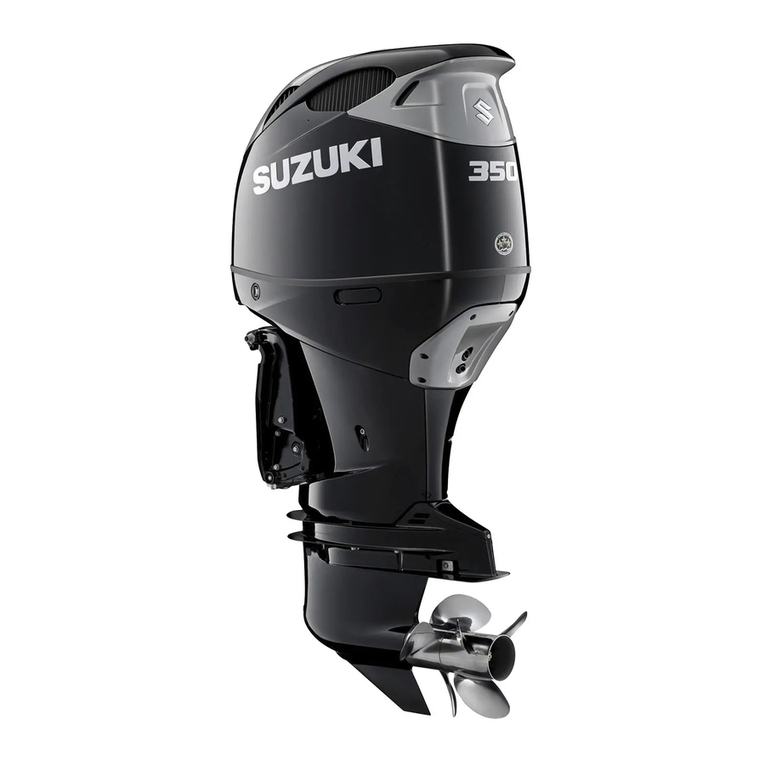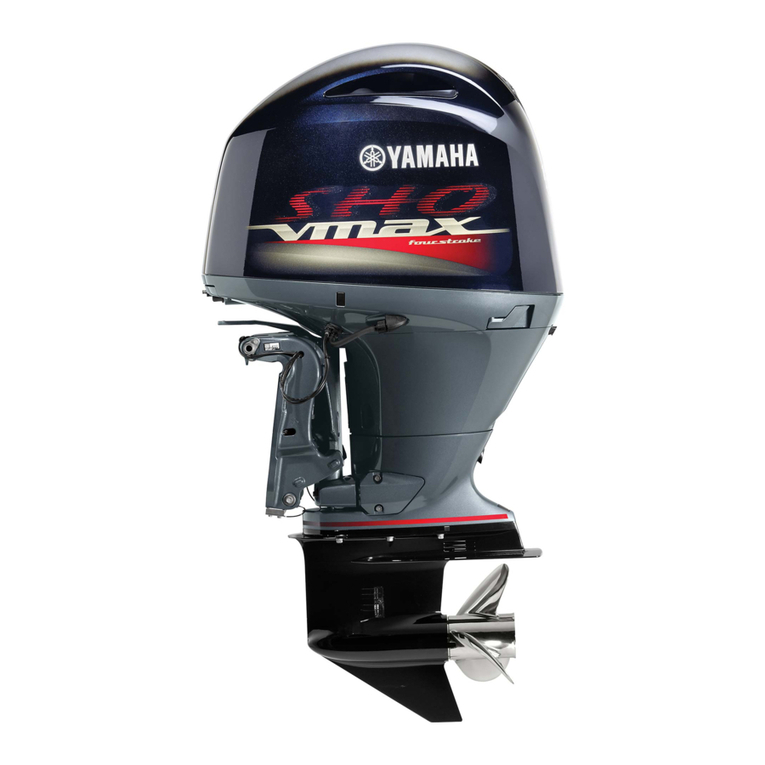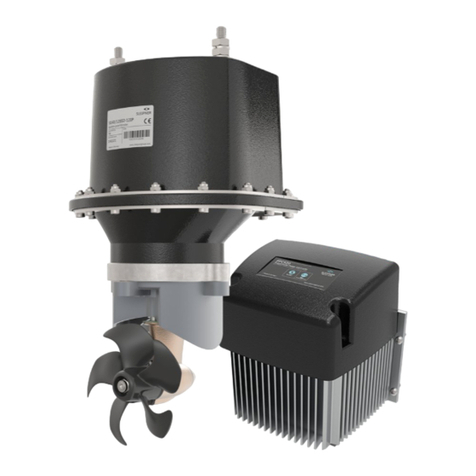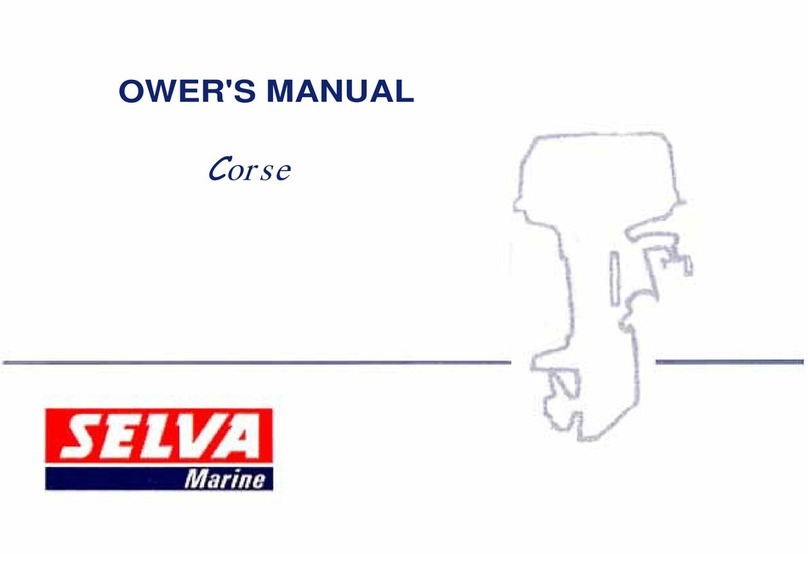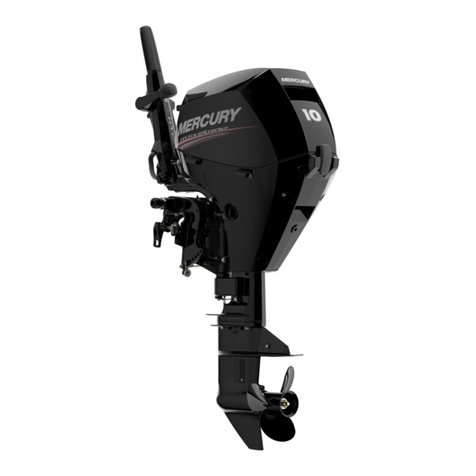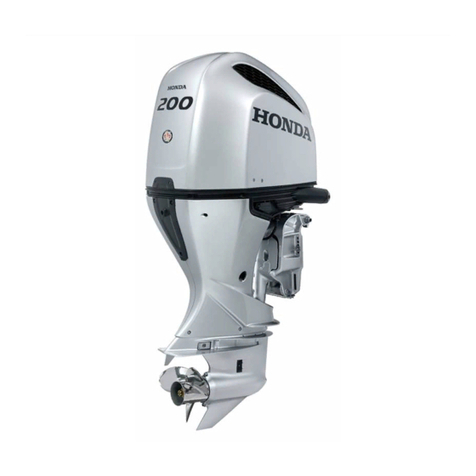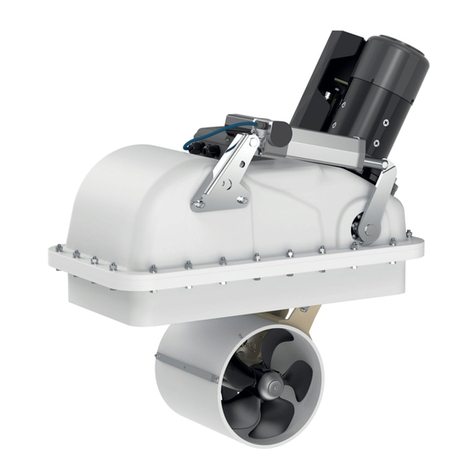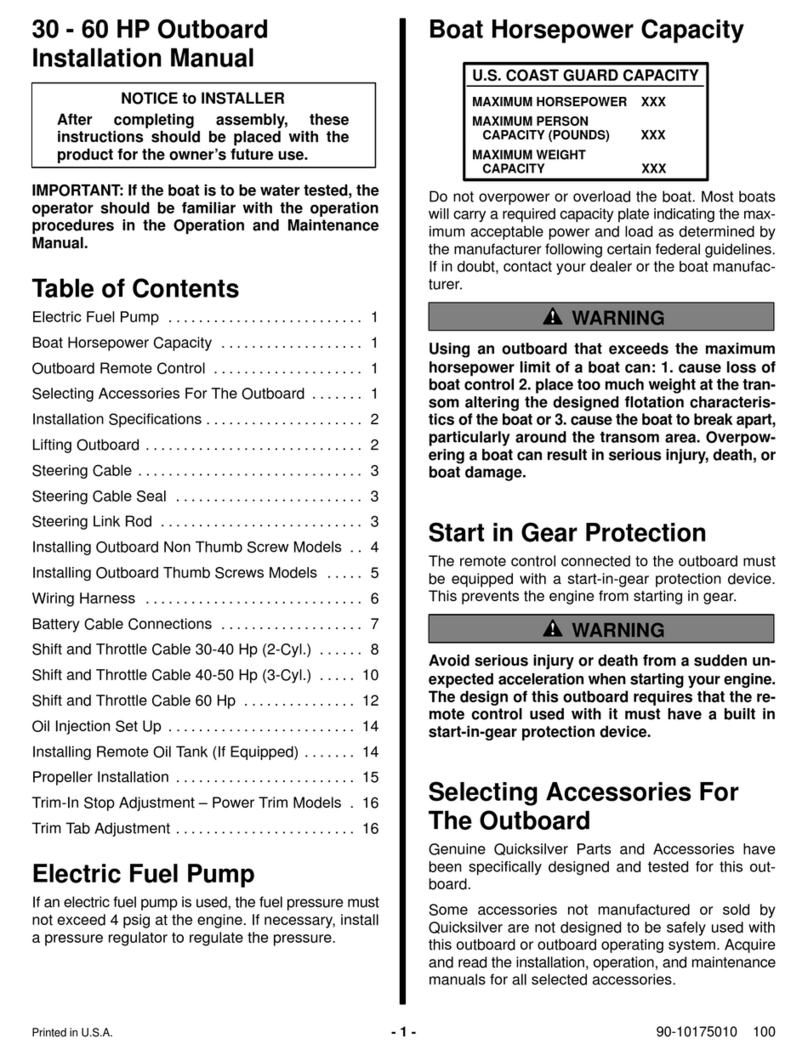Northern Lights OLP LP445 User manual

OLP
For Models: LP445, LP455T, LP668D and LP668T
OPERATOR’S MANUAL
Marine Generators | Marine Diesel Engines | Land-Based Generators

Diesel engine exhaust and some of its constitu-
ents are known to the State of California to cause
cancer, birth defects, and other reproductive harm.
— CALIFORNIA —
Proposition 65 Warning:
Northern Lights
4420 14th Avenue N.W.
Seattle, WA 98107
Tel: (206) 789-3880
Fax: (206) 782-5455
Copyright ©2000 Northern Lights, Inc.
All rights reserved. Northern Lights™, and
the Northern Lights logo are trademarks of
Northern Lights, Inc.
Printed in U.S.A.
PART NO.: OLP 05/00

OLP 05/00
Read this operator's manual thoroughly before starting to operate your equipment.
This manual contains information you will need to run and service your new unit.
OPERATOR'S MANUAL
#OLP for Models
LP445D, LP445T, LP668D, and LP668T
INTRODUCTION ..................................................2
Models Included .................................................2
Model Numbers ..................................................2
Serial Numbers ...................................................2
WARRANTY .........................................................3
SAFETY RULES .......................................3
COMPONENT LOCATIONS .............................4
LUGGER CONTROL PANEL ...........................5
OPERATING PROCEDURES
Before Starting....................................................6
Idle Speeds..........................................................7
Shutdown Procedures .........................................7
Break-In Period...................................................7
SERVICING SCHEDULE CHART ................8
SERVICE RECORD ..........................................9
SERVICING
Lubrication - General....................................... 10
Checking Oil.................................................... 10
Oil Changes ..................................................... 10
Changing Oil Filter .......................................... 10
Air Filter .......................................................... 10
Valve Clearances...............................................11
Fuels - General..................................................11
Fuel Filters ....................................................... 12
Bleeding the Fuel System ................................ 12
Injector Service...........................................13-14
Injection Pump............................................14-16
Turbocharger.................................................... 17
Turbo Boost ..................................................... 17
Cooling System - General................................ 17
Engine Coolant Specications....................17-19
Cooling System Flushing................................. 19
Heat Exchanger Cleaning ................................ 19
Heat Exchanger Diagram................................. 26
Zinc Electrodes ................................................ 20
Raw Water Pump ............................................. 20
Electrical System - General ............................. 20
Booster Batteries.............................................. 21
Battery Care ..................................................... 21
Winterizing / Out-of-Service ........................... 21
TROUBLESHOOTING
Electrical .......................................................... 22
Engine .........................................................22-23
DATA SHEETS
Lugger Performance Specications................. 24
Propeller Recommendations............................ 24
Lugger Installation Data .................................. 25
WIRING DIAGRAMS
Lugger DC Electrical..................................27-30
ON-BOARD SPARE PARTS ....................... 31
Proprietary Information
This publication is the property of Alaska Diesel Electric, Inc.
It may not be reproduced in whole or in part without the written permission of Alaska Diesel Electric, Inc.
© Alaska Diesel Electric, Inc. All rights reserved. Litho U.S.A. Publication number OLP 05/00
Table of Contents
1

OLP 05/00
Servicing of marine engines and generator sets
presents unique problems. In many cases boats cannot
be moved to a repair facility. Marine engines cannot
be compared to the servicing of automobiles, trucks or
even farm equipment. Failures often occur in remote
areas far from competent assistance. Marine engines
are taxed far more severely than auto or truck engines;
therefore, maintenance schedules must be adhered to
more strictly.
Failures begin with minor problems that are overlooked
and become amplied when not corrected during rou-
tine maintenance.
As operator, it is your obligation to learn about your
equipment and its proper maintenance. This is not a
comprehensive technical service manual. Nor will it
make the reader into an expert mechanic. Its aim is to
aid you in maintaining your unit properly.
Introduction
D & T
LP - Lugger marine propulsion engine Lugger model number
4 Cylinder 4.5 Liters
(John Deere model number)
4 Cylinder 4.5 Liters
Model Numbers
Model numbers give the unit's application, block model, aspiration, and RPM:
D - Naturally aspirated
T - Turbocharged
++
Lugger®turbocharged marine propulsion
engine with a John Deere Powertech 4045
engine block.
Lugger®naturally aspirated marine propulsion
engine with a John Deere Powertech 4045
engine block.
LP445T
LP445D
LP 445 (4045)
=
=
2
Serial Numbers
When referencing Alaska Diesel Electric equipment by serial number, please refer only to the number
stamped on the Northern Lights®or Lugger®serial number plate.
Lugger®turbocharged marine propulsion
engine with a John Deere Powertech 6068
engine block.
Lugger®naturally aspirated marine propulsion
engine with a John Deere Powertech 6068
engine block.
LP668T =
LP668D =

OLP 05/00
CAUTION: This symbol is used throughout
this book to alert you to possible danger areas.
Please take special notice of these sections.
A warranty registration certicate is supplied
with your set. It entitles the original purchaser of
our equipment to a warranty covering material
or assembly faults. The extent of coverage is
described in the Limited Warranty Statement. We
recommend that you study the statement carefully.
NOTE: If the warranty is to apply, the servicing
instructions outlined in this manual must be
followed. If further information is needed, please
contact an authorized dealer or the factory.
CAUTION: Accident reports show that careless use of engines causes a high percentage of accidents.
You can avoid accidents by observing these safety rules. Study these rules carefully and enforce them on the job.
• Use caution in handling fuel. Never refuel a hot
or running engine. Do not smoke while lling
fuel tank or servicing fuel system.
• Keep your hands, feet, hair and clothing away
from power-driven parts.
• Check for any loose electrical connections or
faulty wiring.
• Engines should be operated only by knowledge-
able, qualied personnel.
• Look completely around engine to make sure
that everything is clear before starting.
• Do not operate an engine that isn't in proper
working order. If an unsafe operating condition is
noted, tag the set and control panel so others will
also know about the problem.
• Provide rst aid kits.
• Never leave engine without proper security.
• Turn the coolant tank cap slowly to relieve
pressure before removing. Add coolant only
when the engine is stopped and cool.
• Mount a re extinguisher near engine.
• Always disconnect the battery ground strap
before making adjustments.
• Operate engines in properly ventilated areas.
• Keep trash and other objects away from engine.
• Escaping uids under pressure can penetrate
your skin. Use a piece of cardboard or wood,
not your hands, to search for leaks.
• Avoid wearing loose clothing without a belt
when working around engines.
• Do not oil or grease engine while it is running.
Safety Rules
Warranty
3
CALIFORNIA
Proposition 65 Warning:
Diesel engine exhaust and some of its constitu-
ents are known to the State of California to cause
cancer, birth defects, and other reproductive harm.
This manual suits for next models
3
Table of contents
